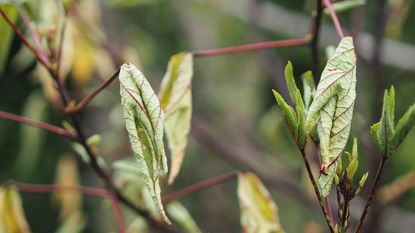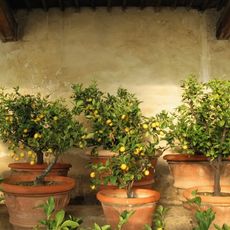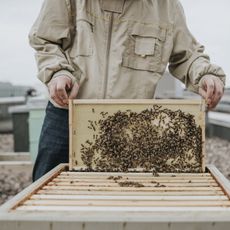History Of Roselle Plant


Everybody wants to claim a winner as their own. Roselle(Hibiscus sabdariffa) has been dubbed Florida cranberry and Jamaica sorrel, although in truth it is not native to the Americas. Many parts of this interesting plant can be eaten or used medicinally. It is quite easy to grow in the right climate and location.
Roselle Plant History
The history of roselle begins in Central and West Africa, where it is a native plant. However, these days it is cultivated in many places around the world. It's grown in the tropics as an aromatic herb with many medicinal properties. Gardeners around the globe also cultivate roselle for its attractive leaves and flowers. The plant can grow to 9 feet tall with a 6-foot spread. It is easy to grow and thrives on disturbed ground. Many parts of this easy-to-grow plant are edible. The abundant leaves are reddish in color and deeply lobed. You can cook them as a vegetable or toss them raw into a salad. Look for yellow flowers to appear in October. Each blossom will grow to 3 inches wide and have a darker center. You'll recognize the calyx - a fleshy, cup-like plant structure at the base of each flower - by its blood-red color. It contains the plant's seeds, which can be roasted and brewed like coffee. The fruit-like calyx is the most popular part of the plant for eating. It tastes tart and sweet, and cooks say it is an excellent substitution for cranberries. Bakers use it in place of rhubarb in pies and crisps. The calyces can also be used to add color and flavor to herb teas. That's why roselle is known as one of the best hibiscus tea plants. Just be sure to harvest the calyces before they turn brown.
Growing Roselle Flowers
Think sun if you want to find a site for growing roselle flowers. The plants just won't grow in shade. On the other hand, most types of roselle are photoperiodic, flowering only as the days get shorter. They will not flower when the days have more than 13 hours of light. Plant in early spring to give the plants time to develop. However, no matter how early you plant your roselle, the calyces won't be ready for harvest until October. Since the plants die at the first frost, you'll do far better in frost-free zones. Plant roselle in loamy soil for best results. You won't need to fertilize. No need to weed either once these fast-growing plants start to get taller.
Gardening tips, videos, info and more delivered right to your inbox!
Sign up for the Gardening Know How newsletter today and receive a free download of our most popular eBook "How to Grow Delicious Tomatoes."

Teo Spengler has been gardening for 30 years. She is a docent at the San Francisco Botanical Garden. Her passion is trees, 250 of which she has planted on her land in France.
-
 Want a Backyard Mini Orchard? Create Your Own Container Orchard
Want a Backyard Mini Orchard? Create Your Own Container OrchardEasier to care for in small spaces, a backyard mini-orchard makes sense for busy gardeners and juicy fruit is the reward.
By Teo Spengler
-
 Urban Beekeeping Guide: Top Tips For Raising Bees In The City
Urban Beekeeping Guide: Top Tips For Raising Bees In The CityUrban beekeeping can be a rewarding and appreciated pastime, but first be sure it’s legal in your city and learn the ropes of beekeeping.
By Mary Ellen Ellis